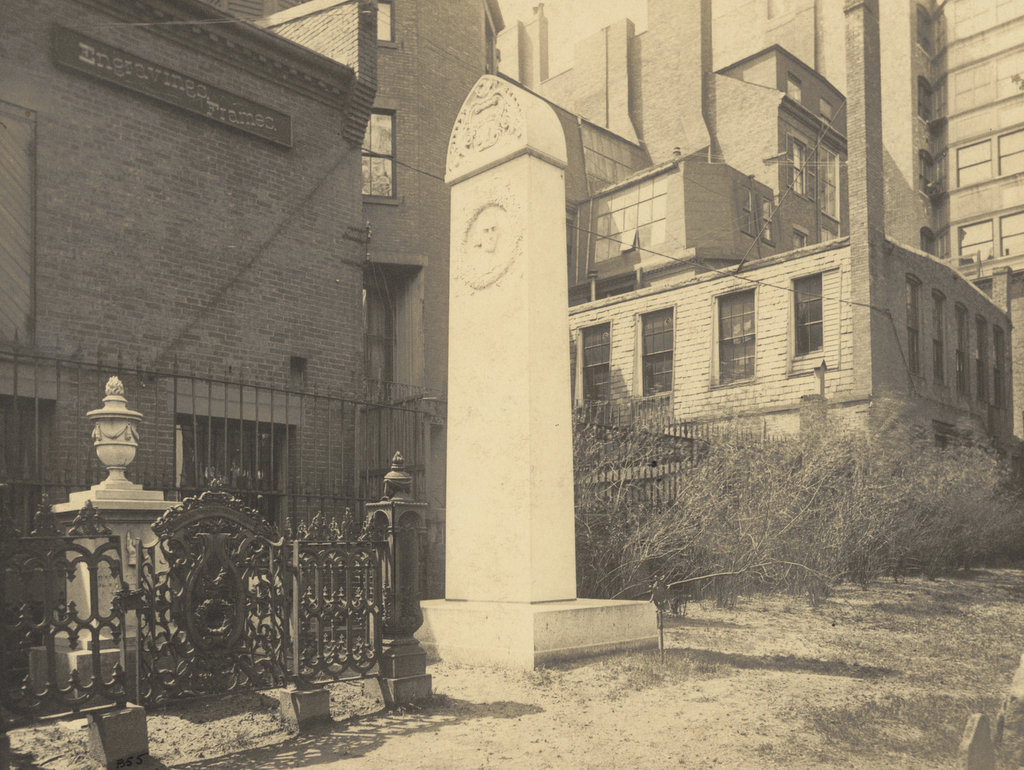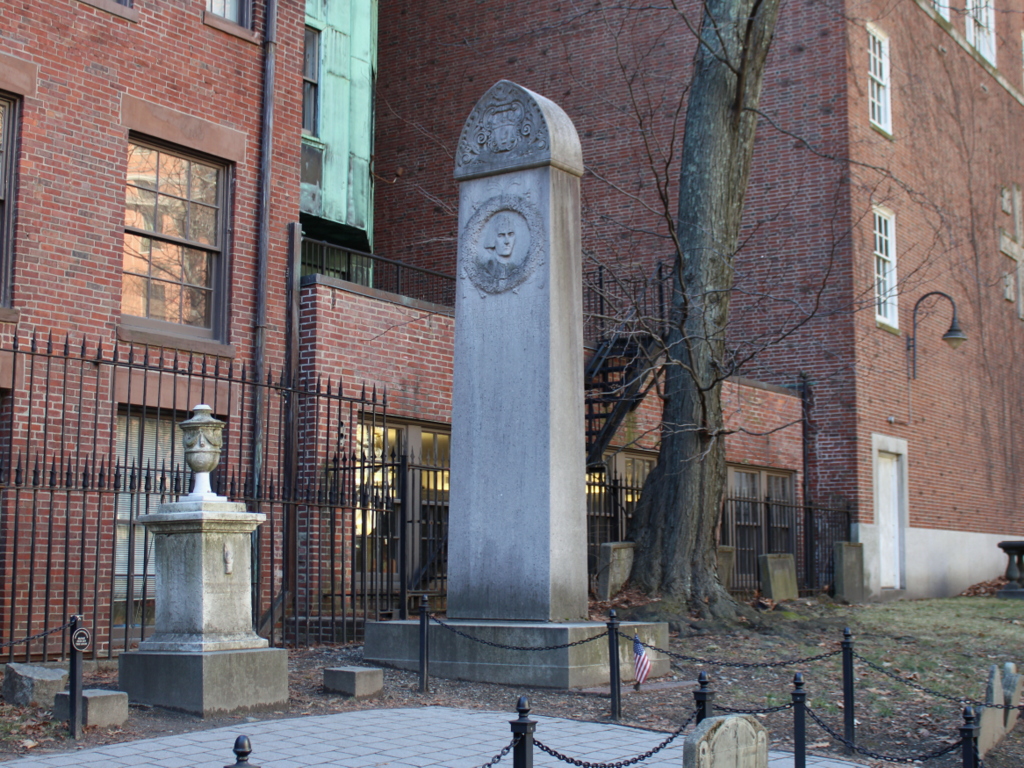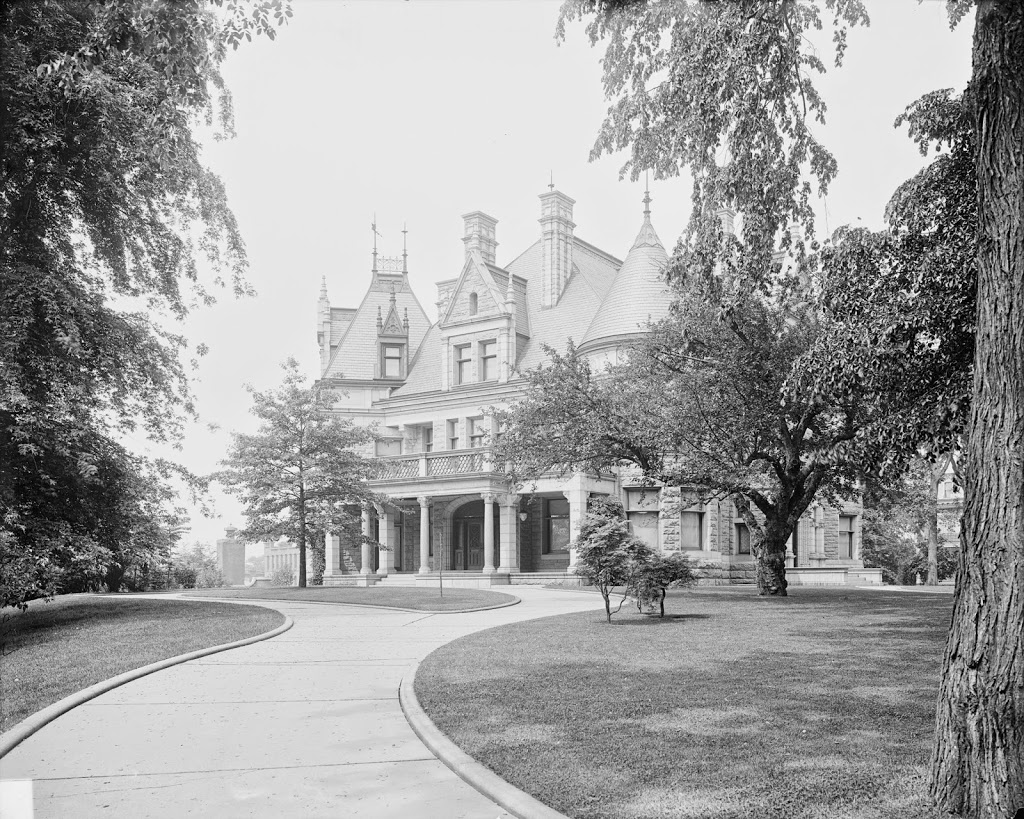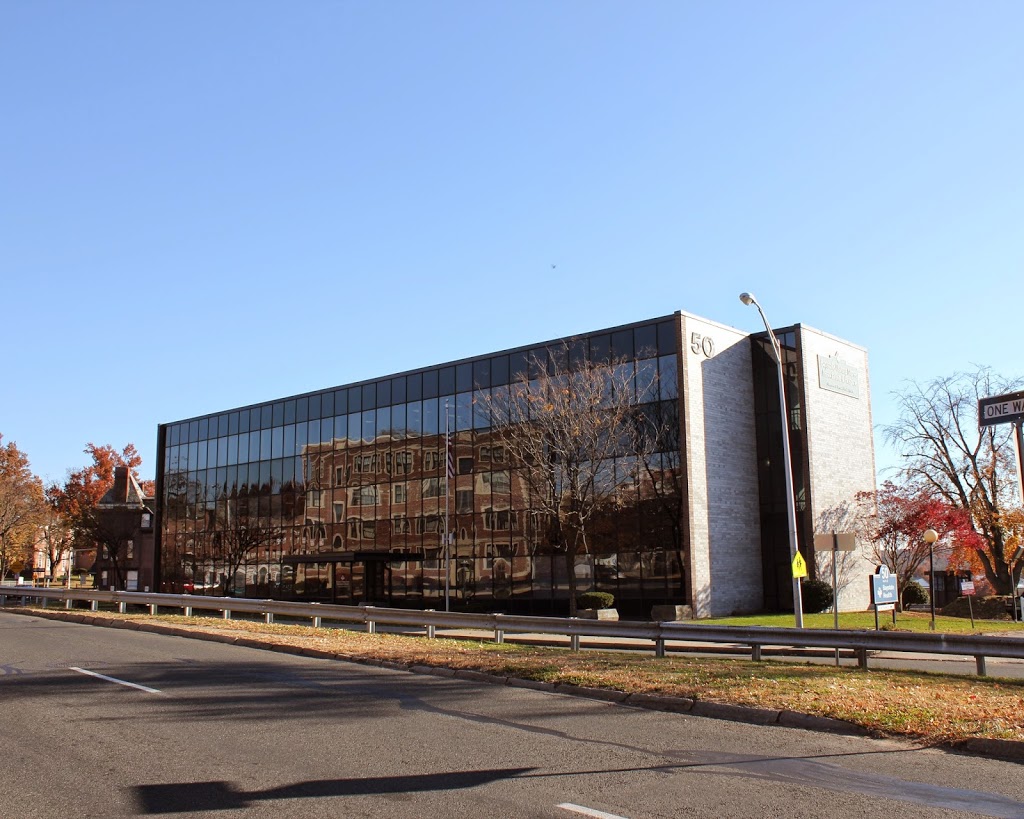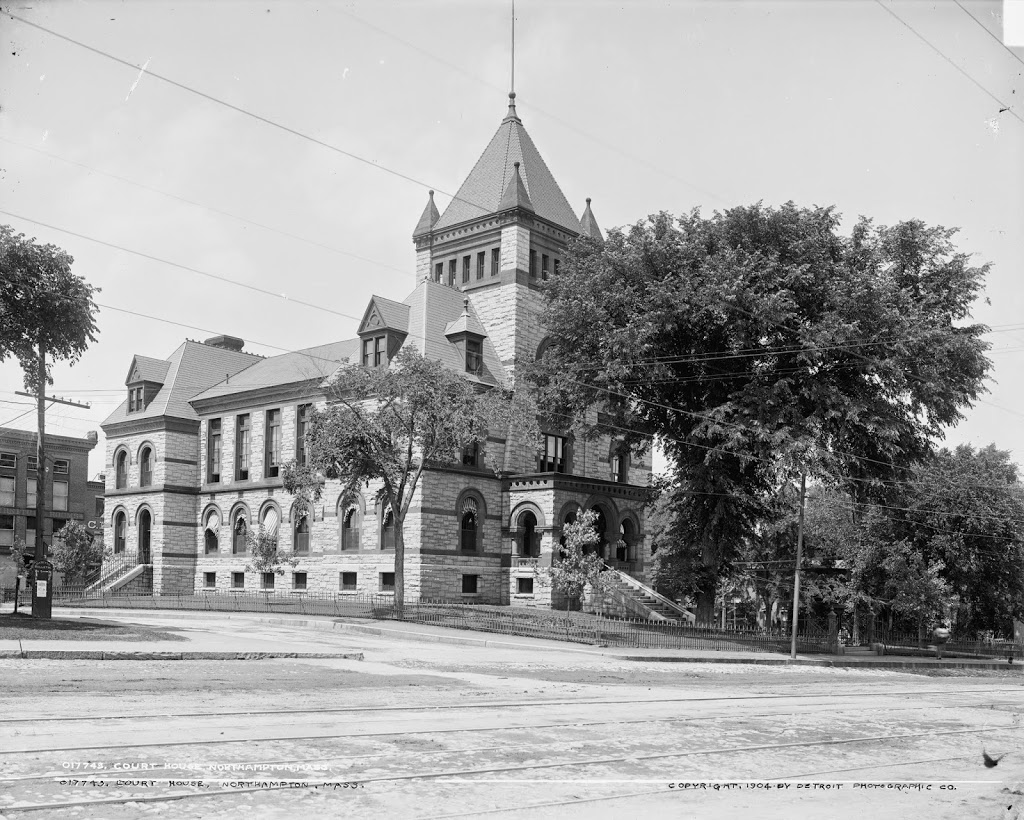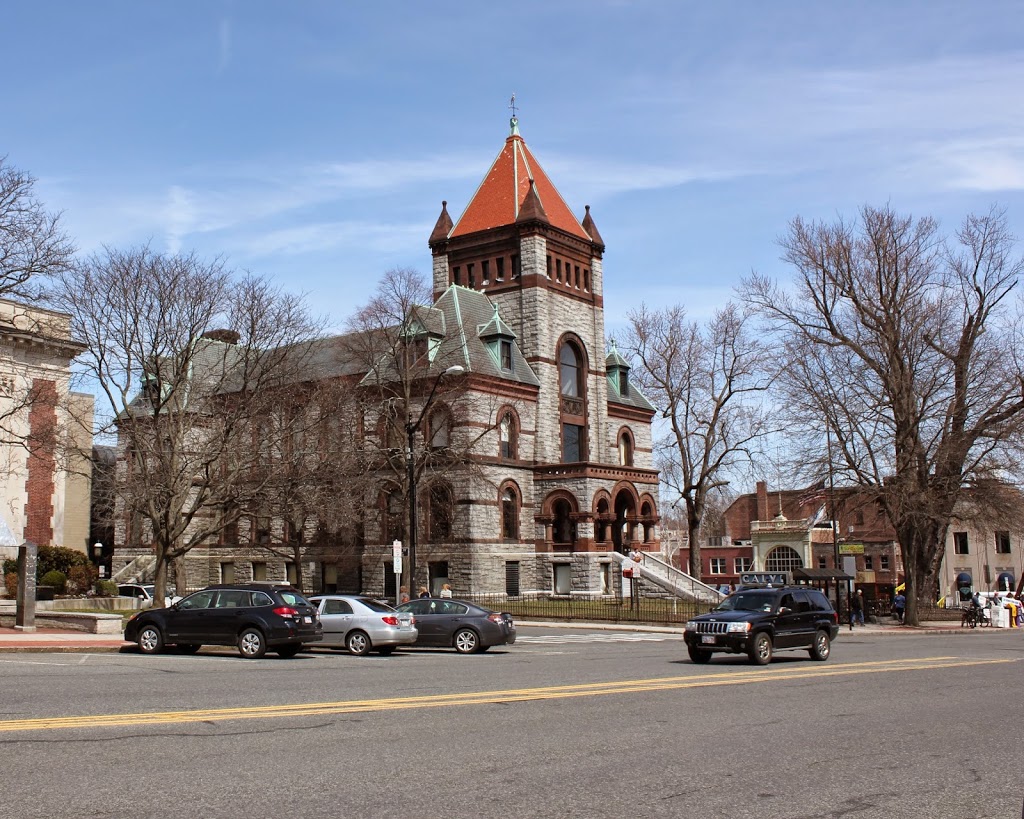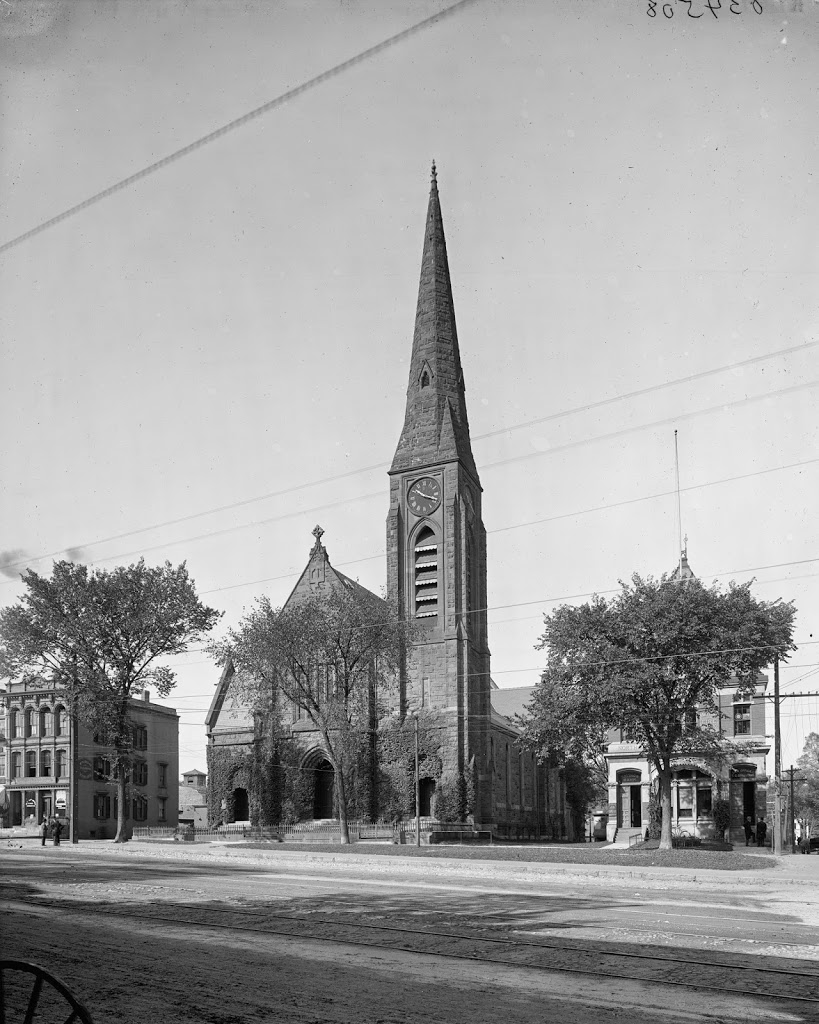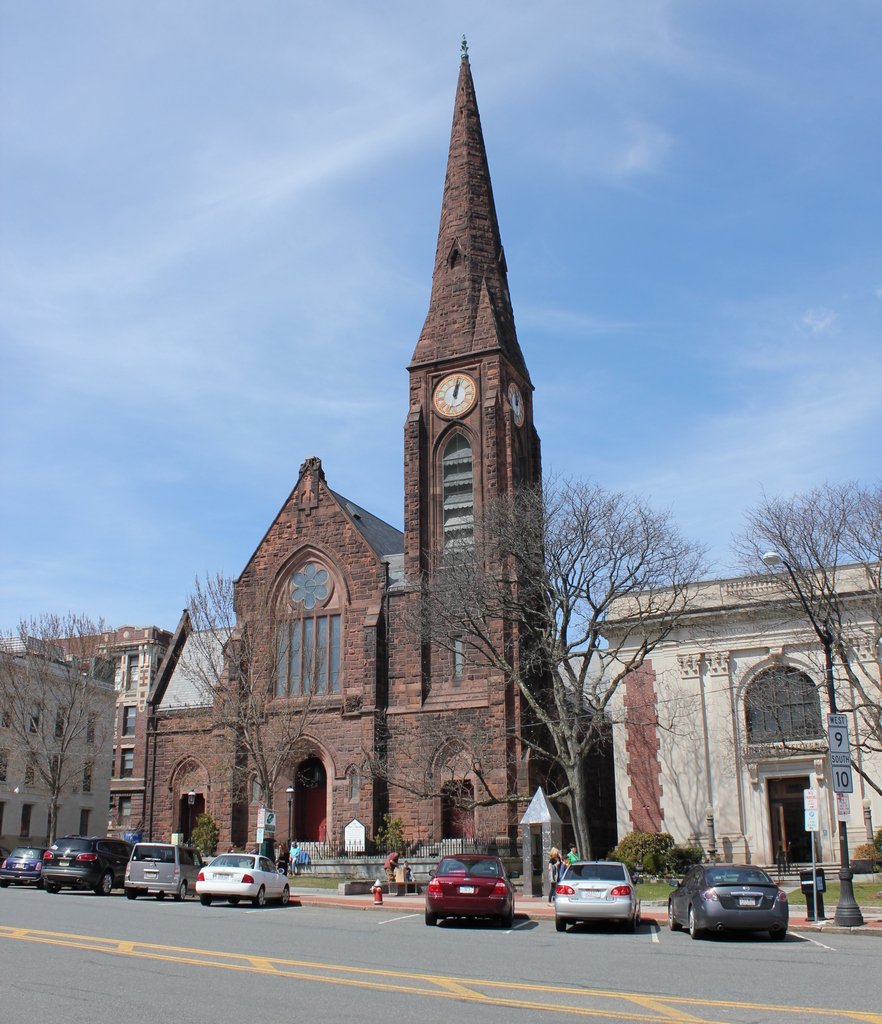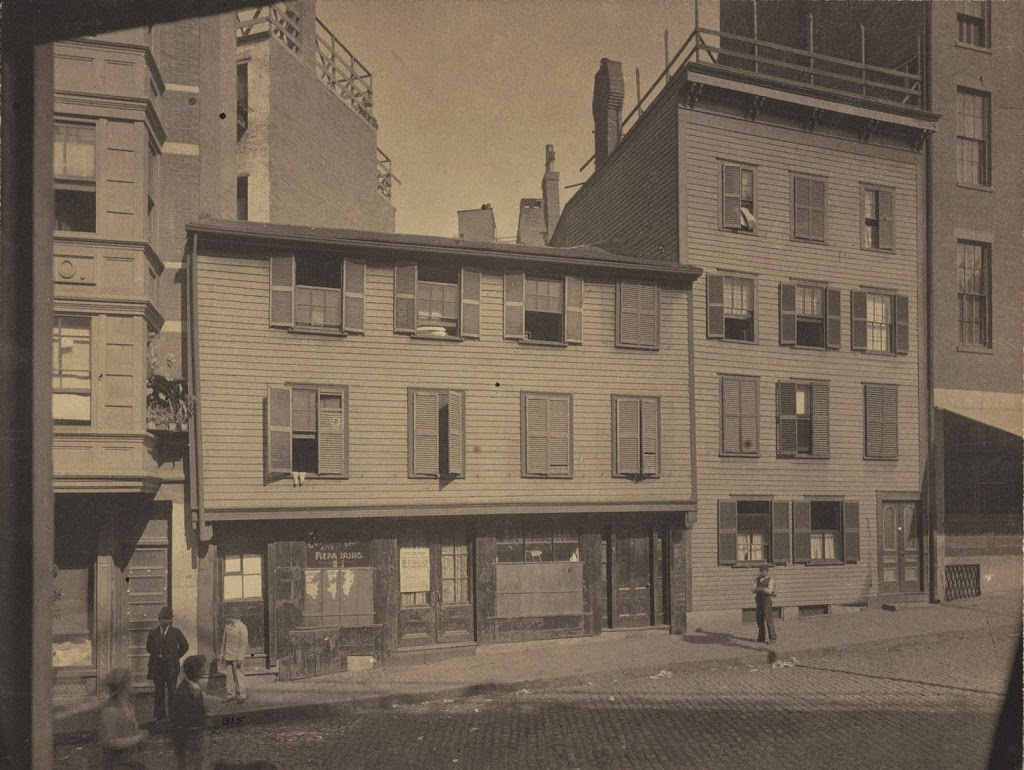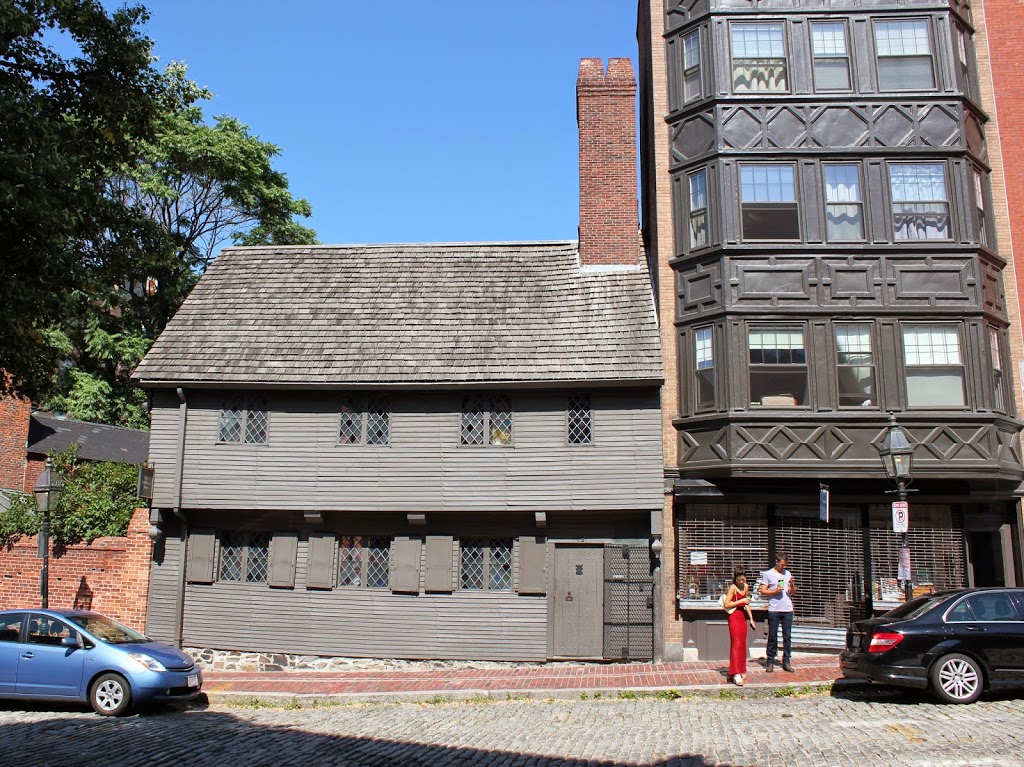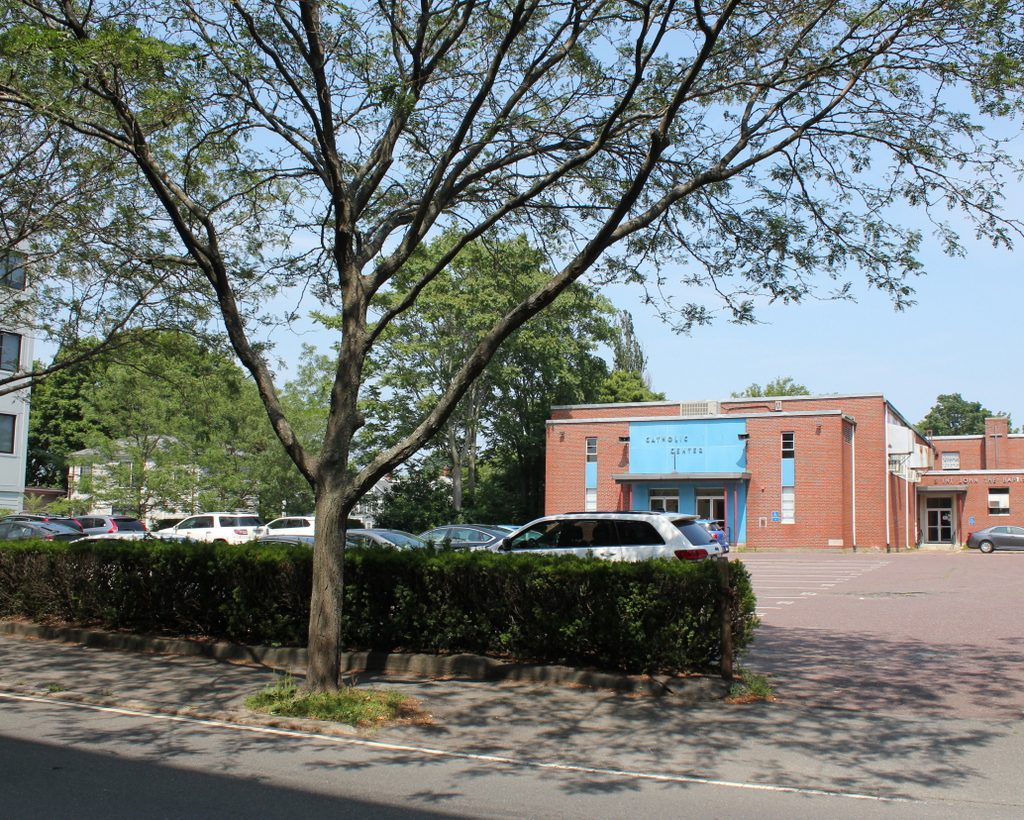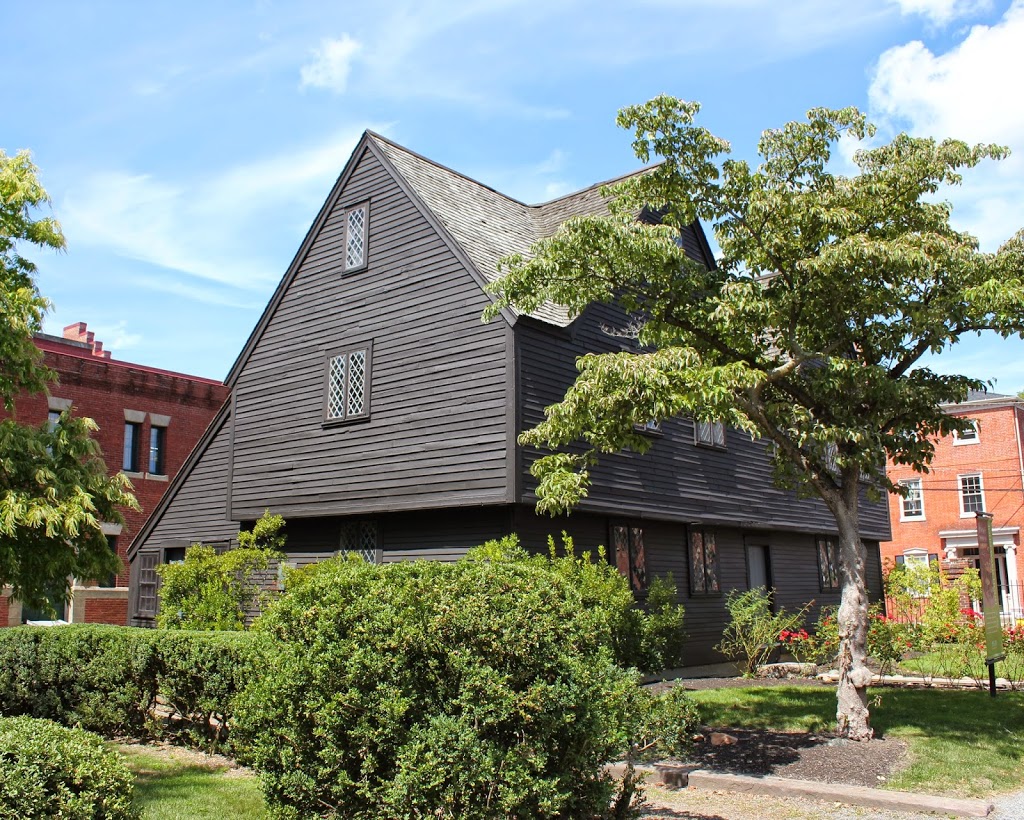John Hancock’s grave in the Granary Burying Ground, around 1898. Photo courtesy of Boston Public Library.
The same site in 2023:
Although John Hancock died in 1793, his grave wasn’t memorialized until 1896, about 2 years before the first photo, when the monument was dedicated. The graveyard itself remains much the same as it was in 1898, down to the fence between it and the surrounding buildings, but the buildings themselves are very different from the ones at the end of the 19th century.

